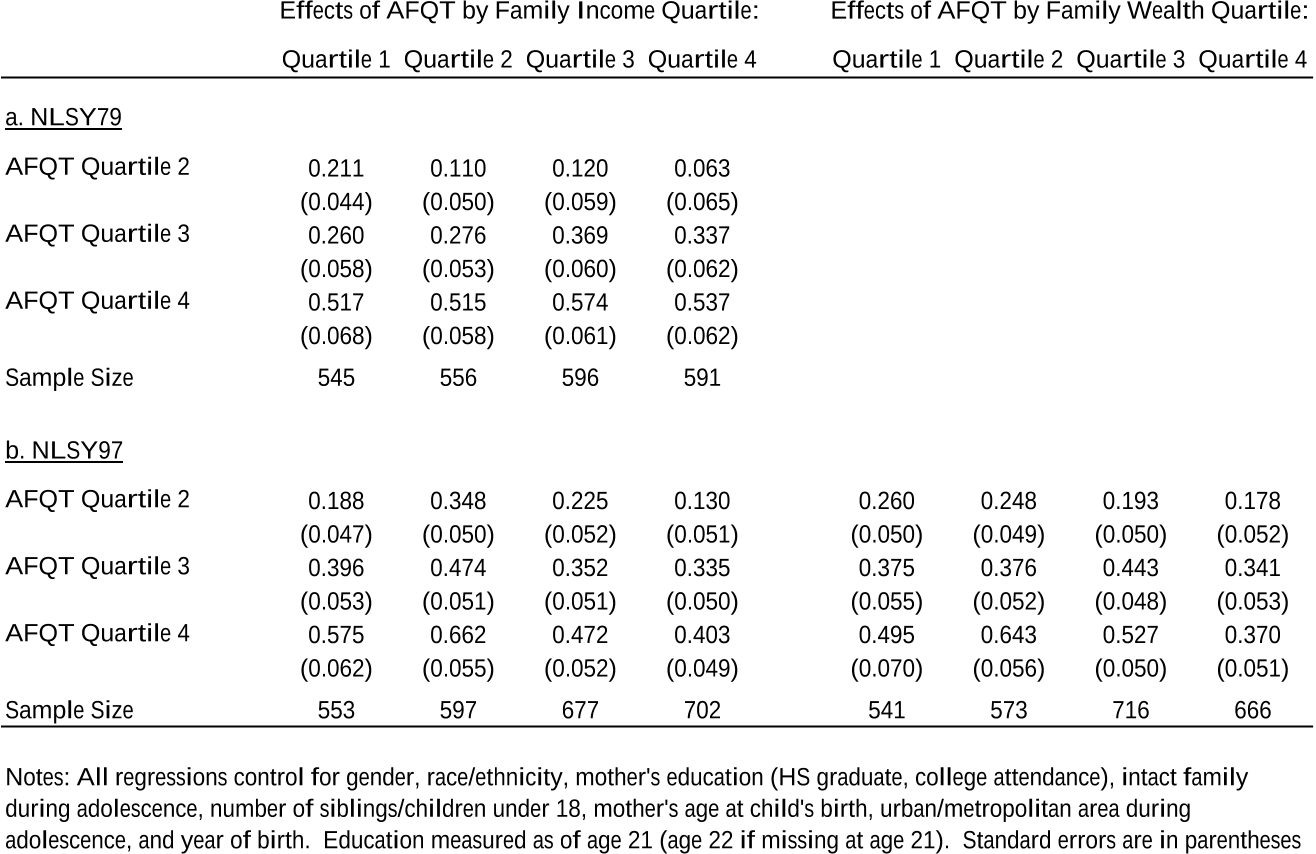The Nature of Credit Constraints and Human Capital
Reads0
Chats0
TLDR
This paper developed a human capital model with borrowing constraints explicitly derived from government student loan (GSL) programs and private lending under limited commitment, which helps explain the persistent strong positive correlation between ability and schooling in the U.S., as well as the rising importance of family income for college attendance.Abstract:
We develop a human capital model with borrowing constraints explicitly derived from government student loan (GSL) programs and private lending under limited commitment. The model helps explain the persistent strong positive correlation between ability and schooling in the U.S., as well as the rising importance of family income for college attendance. It also explains the increasing share of undergraduates borrowing the GSL maximum and the rise in student borrowing from private lenders. Our framework ofiers new insights regarding the interaction of government and private lending as well as the responsiveness of private credit to economic and policy changes.read more
Figures

Table 3: Baseline Model Parameters 
Figure 4: dU , hU , hX , and hG for high wealth individuals (w > w̄) 
Figure 3: dU , hU , hX , and hG for low wealth individuals (w ≤ w̄) 
Figure 8: ‘Year 2000’ GSL and Private Lending Constraints 
Figure 9: Private Borrowing (‘Year 2000’) 
Table 2: Estimated Effects of AFQT on College Attendance by Family Income and Wealth (NLSY79 and NLSY97)
Citations
More filters
Journal ArticleDOI
Student Loan Supply, Parental Saving & Portfolio Allocation
TL;DR: This article found that an expansion of student loan supply affects parents' saving decisions and portfolio allocation, and that the positive effect of student aid on students' college enrollment was strongest among lower-and middle-income families.
Posted Content
The Interplay Between Student Loans and Credit Cards: Implications for Default
Felicia Ionescu,Marius Ionescu +1 more
TL;DR: In this paper, the authors analyzed the relationship between two different forms of unsecured credit and their implications for default behavior of young U.S. households and showed that the institutional differences between the two markets make borrowers prefer defaulting on student loans rather than on credit card debt.
Journal ArticleDOI
Study for Nothing? Gender and Access to Higher Education in a Developing Country
Are Chinese Paying Too Much or Too Little for School Quality? The Rent Yield Gap Approach for Estimating the Capitalization of School Quality in Shanghai
Muyang Zhang,Jie Chen +1 more
TL;DR: In this paper, the unequal right of enrollment for public schools between households with different tenure statuses in urban People's Republic of China (PRC) affects rental yields, and the results of education equalization programs in terms of educational and residential segregation and intergenerational mobility are analyzed.
Information, Finance and Wage Inequality
TL;DR: In this article, the authors employ a model of signaling with credit constraints and private employer learning to provide a microfounded justification for the increase in wage inequality in the US over the past four decades.
References
More filters
Journal ArticleDOI
The Production of Human Capital and the Life Cycle of Earnings
TL;DR: In this paper, the authors provide a framework for the understanding of many aspects of observed behavior regarding education, health, occupational choice, mobility, etc., as rational investment of present resources for the purpose of enjoying future returns.
Book ChapterDOI
Changes in the Wage Structure and Earnings Inequality
Lawrence F. Katz,David H. Autor +1 more
TL;DR: In this article, the authors present a framework for understanding changes in the wage structure and overall earnings inequality, emphasizing the role of supply and demand factors and the interaction of market forces and labor market institutions.
ReportDOI
Interpreting the evidence on life cycle skill formation
TL;DR: In this paper, the authors formalize the concepts of self-productivity and complementarity of human capital investments and use them to explain the evidence on skill formation, and provide a theoretical framework for interpreting the evidence from a vast empirical literature, for guiding the next generation of empirical studies, and for formulating policy.
Journal ArticleDOI
Life Cycle Schooling and Dynamic Selection Bias: Models and Evidence for Five Cohorts of American Males
TL;DR: This article examined the statistical model used to establish the empirical regularity and the intuitive behavioral interpretation often used to rationalize it, and showed that the implicit economic model assumes myopia and that the intuitive interpretive model is identified only by imposing arbitrary distributional assumptions onto the data.
Related Papers (5)
The Evidence on Credit Constraints in Post-Secondary Schooling†
Pedro Carneiro,James J. Heckman +1 more